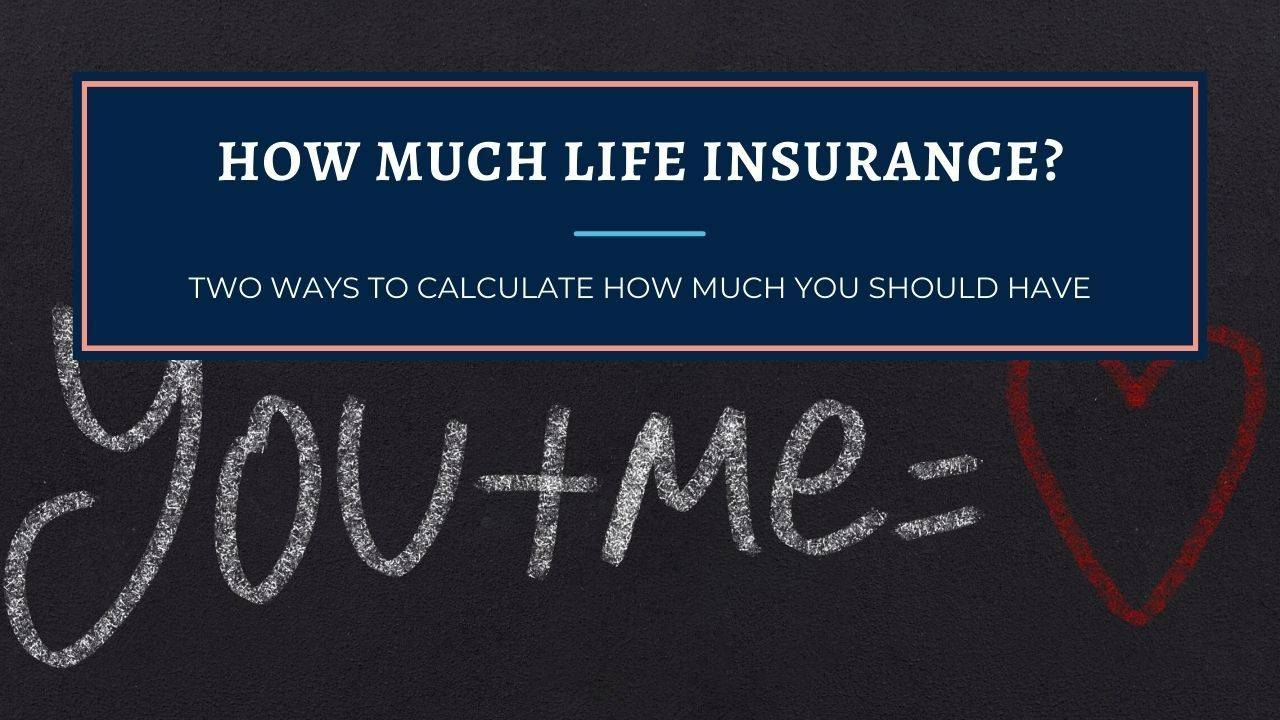How Much Life Insurance Should You Have?
Mar 02, 2022
Recently, with the market volatility and the COVID-19 situation we are currently experiencing, the conversation has changed a little. More and more, over cash value accumulation, people simply want to know how much life insurance should you have.
Most of us look at the death benefit of the group term life insurance offered by our company and think to ourselves "that's a pretty good chunk of change right there. That should hold the fam over for a while…" And that's about the extent of the thought put into life insurance.
Because of this, most Americans are chronically under-insured.
Indemnification
The first thing to understand is that a life insurance death benefit isn't gambling, nor should it be considered a "windfall," especially during the years you are still working.
Life insurance, like all insurance, provides indemnification for a loss.
The life insurance death benefit is meant to indemnify the family for the loss of an income-producer. Most people don't really think through the second and third-order effects of this fact.
Without an appropriately calculated death benefit, the loss of an income producer will result in either:
- A decrease in lifestyle for the family
- The consumption of other savings/assets which reduces or eliminates the future value of those assets
All that being said, there are two primary methods to calculate how much life insurance you should have:
Calculation Methods
Method 1: "Human Life Value"
Human Economic Value (or Human Life Value) is a simple calculation to replace your lifetime earning potential if you were to die prematurely. Take your gross income x the number of years you have left to work (assuming age 65). Example:
Annual income x number of years left to work = Human Life Value
$150,000 per year x 20 years = $3,000,000
Method 2: "Capital Needs Analysis"
The other way is through a Capital Needs analysis. With this method, we ask how much income would we need to cover all expenses (mortgage, rent, health, auto, and other liability insurance, food, school, etc) so that our family does not have to change their lifestyle should anything happen to us.
And then, we want to determine how much capital we would need TODAY, in an account earning very safe interest, to generate enough income to cover all those expenses. That formula would look something like this:
(Monthly expenses x 12) / (account earnings rate/100) - liquid assets - inforce life insurance
Let's break this down a little further. What we want is a death benefit that, if we were to put in an interest-bearing account, could earn enough interest every year to cover all of the expenses. So, with the following assumptions:
- Monthly expenses are $5,000
- Earnings rate = 3% (say CDs)
- Liquid Assets = $500,000
- Existing In-Force Insurance = $500,000 (say from your company benefits package)
$5,000 x 12 = $60,000 annual after-tax expenses
$60,000 / (1 - 24% tax) = $79,000 pre-tax income requirement
$79,000 / (3% / 100) = $2,600,000 of capital required to generate $79,000 per year of pre-tax income, assuming 3% interest
$2,600,000 Total Coverage
- $500,000 Liquid Assets
- $500,000 existing inforce life insurance
= $1,600,000 of additional life insurance needed
Of these two methods, I prefer the Human Life Value method. Often, with a Capital Needs Analysis, people subtract their liquid assets that are ear-marked for other uses such as retirement, thereby cannibalizing an asset that could have otherwise been used in the future by the spouse or passed on to the children.
Other considerations
- Is your current in-force insurance term or permanent?
- If permanent, is it structured correctly to offer guaranteed cash value?
- If term, is it convertible to permanent insurance?
- If offered through your company, do you get to keep it if you leave the company?
If how much life insurance you should have has been on your mind, get in touch !
